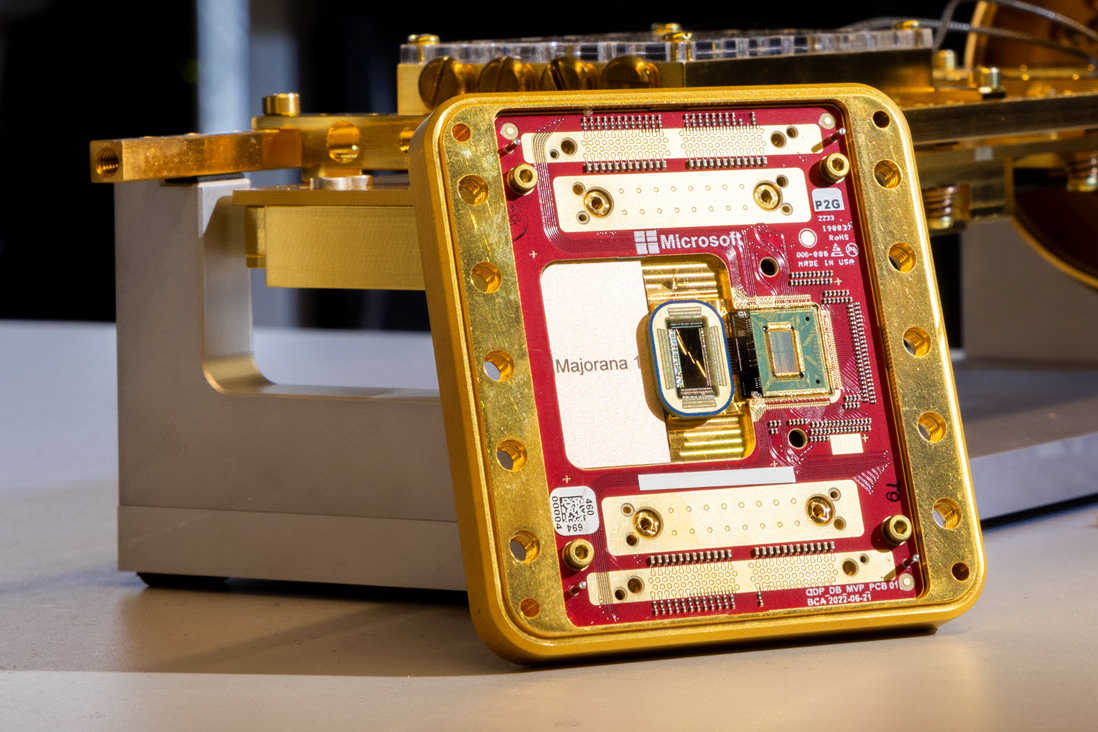2025-02-22

Microsoft has introduced a
groundbreaking quantum chip called Majorana 1 on February 19, 2025. It
is designed to solve complex industrial problems in just a few years.
The chip is powered by a Topological
Core architecture, which utilizes Majorana particles to create more reliable
and scalable qubits.
Qubits are the fundamental units of
information in quantum computing, similar to binary bits in classical computing
A Game-Changer in Quantum Computing
The Majorana 1 chip is built using a
special material known as a topoconductor that can control Majorana particles,
allowing for the creation of more stable quantum bits, or qubits.
Qubits are the building blocks of
quantum computers, and this new development could lead to systems capable of
processing a million qubits—a major milestone for practical quantum
applications.
The chip is made from indium arsenide
and aluminum, fabricated almost atom by atom. This material stack helps protect
quantum information from random disturbances and allows for reliable
measurement and digital control.
Currently, Majorana 1 contains eight
topological qubits but has the potential to scale up to one million qubits on a
single chip. Achieving this milestone could enable solutions for complex
problems that current computers cannot solve efficiently.
What This Means for the Future
Microsoft believes Majorana 1 could
revolutionize industries by enabling quantum computers to perform tasks
impossible for today’s most powerful supercomputers. Potential applications
include:
A New Path for Quantum Technology
Microsoft has been working on this
project for nearly two decades, choosing to develop topological qubits instead
of traditional quantum computing methods. The Majorana 1 chip is small enough
to fit in the palm of a hand yet holds the potential to power the first
large-scale quantum computer.
With support from the Defense Advanced
Research Projects Agency (DARPA), Microsoft is one of the leading companies
pushing quantum computing towards commercial use. Experts believe this
technology could soon surpass traditional computing methods.
Quantum Computing and Bitcoin Security
While quantum breakthroughs bring
excitement, they also raise concerns in the cryptocurrency industry.
Some fear quantum computers could
eventually break existing encryption methods, including those securing older Bitcoin
wallets.
However, experts say this won’t be an
immediate threat, estimating that such risks may arise between 2029 and 2035.
Quantum computers have long been
considered a threat to cryptographic security, and the Majorana 1 chip’s
capabilities have reignited debates about the timeline for quantum attacks on
digital assets.
Despite these concerns, experts like
Pierre-Luc Dallaire-Demers, a scientist-in-residence at the University of
Calgary, believe that the timeline for quantum threats to Bitcoin remains
unchanged, estimating that older Bitcoin wallets could be vulnerable by
2029-2031.
Microsoft’s Majorana 1 chip leverages
Majorana fermions to create qubits that encounter fewer errors, making them
easier to scale.
However, Dallaire-Demers estimates that
this technology is still a decade away from surpassing superconducting qubits
in dominance.
While some fear that quantum
advancements could lead to the cracking of cryptographic protections, most
blockchain projects have contingency plans in place to counteract these risks.
The quantum threat to cryptography
extends beyond cryptocurrencies.
Future quantum machines may be capable
of breaking Rivest-Shamir-Adleman (RSA) encryption, widely used in securing
internet communications.
While the Majorana 1 chip is unlikely
to pose an immediate threat, Dallaire-Demers suggests that by 2035, it may
become a serious contender for breaking RSA encryption.